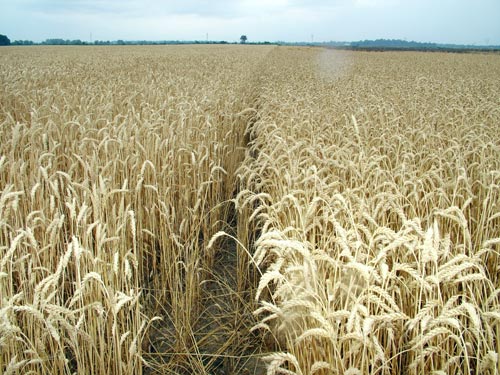May 16, 2011

Reports of white heads in wheat fields have been coming in from throughout central Kansas this week, said Jim Shroyer, K-State Research and Extension crop production specialist.
Several factors can cause white heads in wheat, but the most common factor at work now is widespread premature death of the heads from the period of record-breaking heat on May 8 to May 10, Shroyer said.
“In many fields of central and western Kansas, the root systems of wheat have been stunted all spring due to dry soils and possibly soil compaction. The result is that the plants were under stress when the extreme heat and high winds occurred for two or three days about a week ago,” he explained.
The combination of drought stress and heat stress has caused many heads to die and turn white, Shroyer said. The change in color from green to white can be quite sudden.
“It will often seem that the heads turned white overnight,” Shroyer said. “When the heads die, the chlorophyll is destroyed and the color does disappear quite rapidly. The heads can turn white almost in a flash, or at least it can seem that way.”
The other common effect of the period of extreme wheat being observed now in many fields is floret sterility, Shroyer added. This happens when the heat occurs while the wheat is in the flowering stage, and the results can be severe, he said.
“The record-breaking heat we had has already caused up to 50 percent or more of the florets to become sterile in some fields where the wheat was flowering. This will result in fewer kernels per head,” he said.
If the remaining kernels fill well, that can help reduce potential yield loss from having fewer kernels per head, he added. Where floret sterility occurs, the heads will retain their normal color.
“Floret sterility and white heads from premature death are two entirely different problems, although both can be occurring in the same fields this spring due to the extreme heat,” Shroyer said. “White heads can be occurring wherever the wheat has headed out, while floret sterility will only be occurring in fields where the plants were flowering at the time of the heat stress.”
You May Also Like




